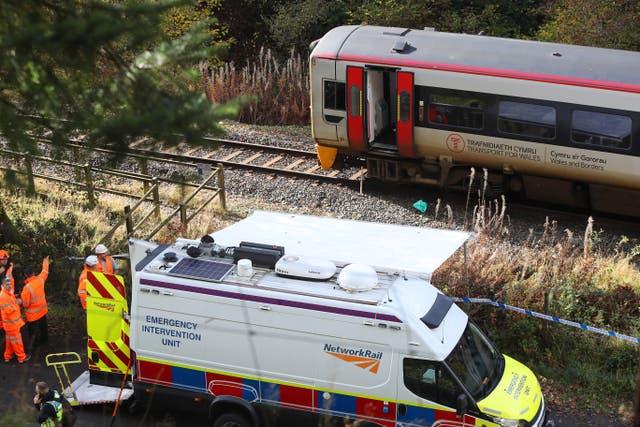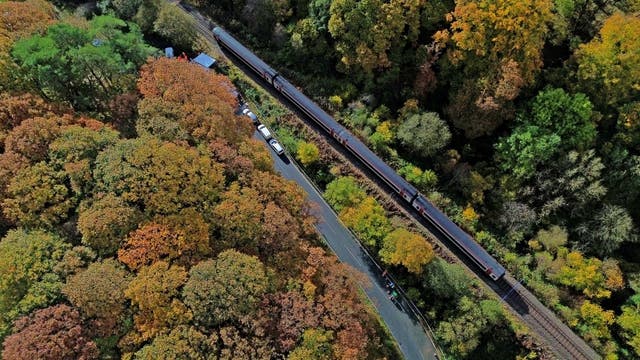Train safety system failed before fatal crash, investigators say
Hoses fitted to the Transport for Wales train to discharge sand when wheels slide during braking were ‘blocked’.

An automated system that helps train wheels grip tracks failed on a train involved in a fatal crash in mid-Wales on October 21, investigators said.
Hoses fitted to the Transport for Wales (TfW) train to discharge sand when wheels slide during braking were “blocked”, the Rail Accident Investigation Branch (RAIB) said in an update on its inquiry.
TfW and Network Rail said it is “fundamental that we await the findings of the full report”.
The train with the failed safety system was travelling at between 15mph and 24mph when it collided head-on with another TfW train travelling at around 6mph.
Passenger David Tudor Evans, 66, died and four other people were seriously hurt.
A further 11 people suffered injuries which required hospital treatment.
Both trains involved in the crash were two-carriage class 158 units.
The train with the failed sanding system was travelling west to Aberystwyth.
It was supposed to stop inside a loop to allow an eastbound train to pass on the single track section of the Cambrian line.
Initial analysis of the on-board data recorder shows the driver applied the brakes as the train neared the loop, during which time the wheels began to slide.
Around 40 seconds later, the driver made an emergency brake demand, which remained in place until the crash.
The train passed through the loop and rejoined the single line, sliding for around 900 metres downhill before the collision occurred.

“It’s of great concern that this should have happened.
“In light of this initial disclosure I would call for a totally independent inquiry, possibly a public inquiry, that looks at all the aspects of the investigation and what went wrong.”
Speaking about Mr Evans, he said: “He was a lovely guy, full of life and enjoyment.
“He was a keen cyclist, very into his sport, and was now into his retirement.
“That’s all been taken away from him.”

Following the crash, Network Rail said one of its railhead treatment trains – which tackle autumn leaf fall – ran along the line and passing loop the night before the crash.
TfW and Network Rail said in a joint statement they have “fully co-operated” with the RAIB, British Transport Police and Office of Rail and Road.
They went on: “As investigations are currently still ongoing, we’ll continue to work together with investigators to understand what happened and await the full conclusion and recommendations of the investigation.
“Safety is always our main priority for our customers and colleagues, and we have carried out enhanced checks to the trains and the railway line to enable the reopening of the Cambrian line on October 28.
Leaves cause major disruption every autumn when they stick to damp rails and become compressed by train wheels.
This creates a smooth, slippery layer similar to black ice on roads, reducing trains’ grip.
Speed restrictions are often imposed in an attempt to reduce accidents such as the crash between two trains outside a tunnel near Salisbury, Wiltshire, in October 2021 which left 13 passengers and one driver requiring hospital treatment.
A South Western Railway train slipped on crushed leaves, causing it to slide past a stop signal and smash into the side of a Great Western Railway service.
A funeral for Mr Evans will be held on Saturday at Aberystwyth Crematorium.
The hearse will be followed by a replica rally car built by Mr Evans.





